In the Studio: Samira Abbassy
“My attempt in depicting the human form is almost like a psychic x-ray, so the n...

Amaryllis R. Flowers is an artist living and working in rural NY. She is a 2022 Joan Mitchell Fellow. We interviewed her about her work and creative practice in May 2023. The following is an edited transcript of that conversation.
My art making practice is really about storytelling. I make large-scale images of psychic rebellion and objects of inappropriate divinity—which is to say, fantasies of survival for those who are not meant to survive. The images that I make and all of the materials that I use are chosen with that same intention in mind.
I have an interdisciplinary practice that ranges from drawings to sculptures to videos and performance. I use materials that are categorized as femme or have oversaturated girl-like substances or colors. Materials that are classified as disposable, vain, “too much” or “surface” are also something that I feel like fall into this category in the world and our current systems of value, especially when it comes to art and visual culture.
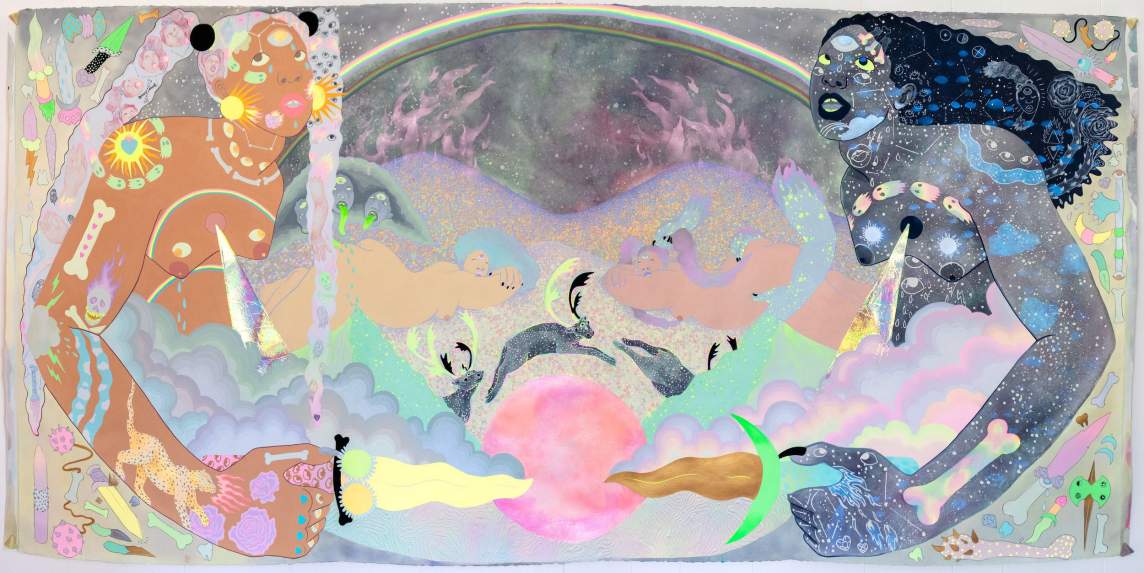
Our versions of reality are constantly being subliminally coded through color and images. Certain visual languages are used to signify intelligence and progress, while others are used to signify what is unimportant, monstrous, trashy. Everything is classed. And then we create meaning from these value systems, build our lives and selves around the categories we inherit and understand to be true. I’m in love with the colors, images, and stories that come from the experience of being disregarded or thrown away by the culture at large. The shorthand I use to describe this dynamic in my work is femme, and fantasy.
Fantasy as a genre has a reputation for frivolity and a means of escape from reality. But to me fantasy has never been that. It's not a means of escape, it's a means to stay. Fantasy is an animal instinct that our brains conjure in order to survive. Acts of imagination under unbearable living conditions help us to evolve. This relationship between fantasy and trauma is what I’m exploring in my work and practice.
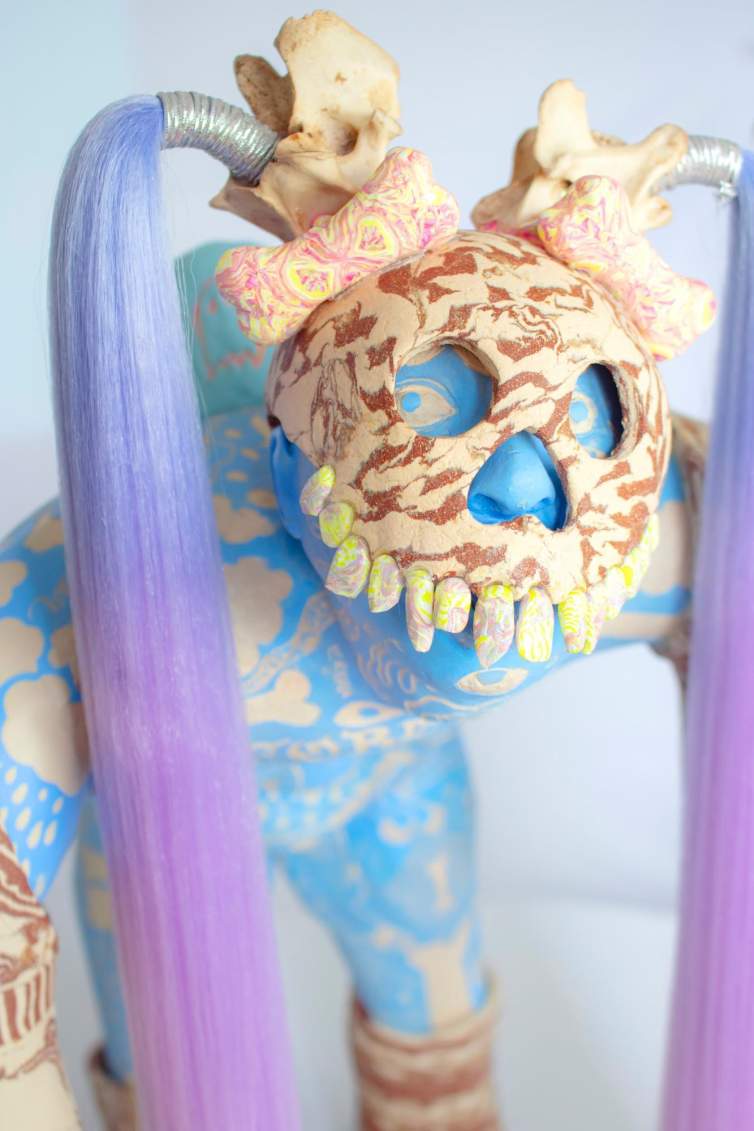
A lot of my materials have structural color, meaning that any color that's coming from them is because of the light. A lot of iridescence, sparkly things, interference paints, stuff like that. And I work in clay as well. For me, both color and clay are these materials that exist in constant flux, always shifting and changing. No matter what it is that we try and do, no matter what material process we put them through to try and fix them, there's something that's completely uncontrollable about them. These are the qualities that I love about my community as well—queers, BIPOC people. We’re out-of-control, and constantly being forced to recreate versions of reality that we can exist in.
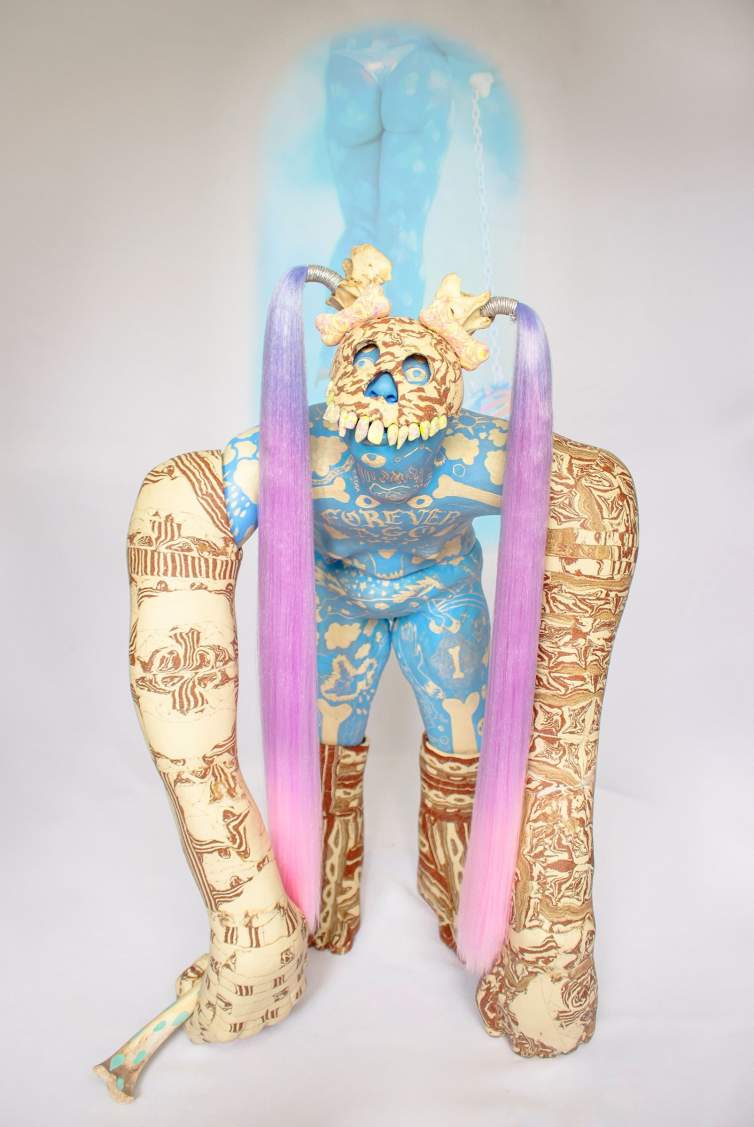
That’s really important in terms of what I’m trying to do in the studio. With these materials, I’m able to create fantasies and stories that are not linear and that exist in the spaces in between categories—where I am able to try and describe something that is inherently unfixable. This is why I refer to spiritual art a lot, because it's always an attempt to describe what we don't have language for and what we can't necessarily observe through sight, through our vision of the world.
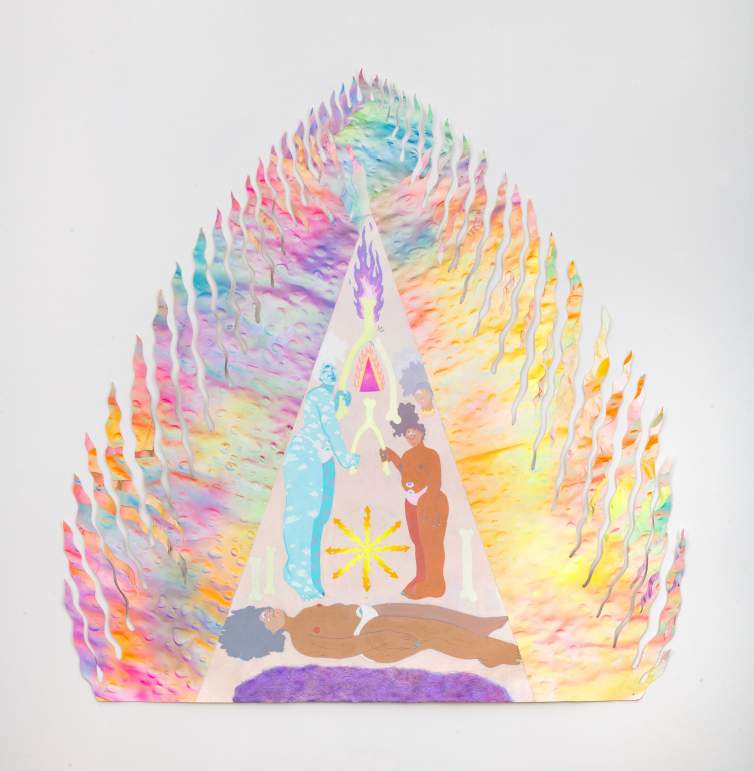
One process I’ve been using in my clay work is nerikomi, which is a technique that gained recognition through contemporary Japanese pottery but has its roots in antiquity. Nerikomi is not a surface decoration. It’s a process of cutting apart differently colored bodies of clay and then piecing them back together into blocks that contain a pattern. I'll build those blocks and then I cut off slabs that hold the pattern and build figures from the slabs. They are bodies built from fragments, and the process of falling apart.
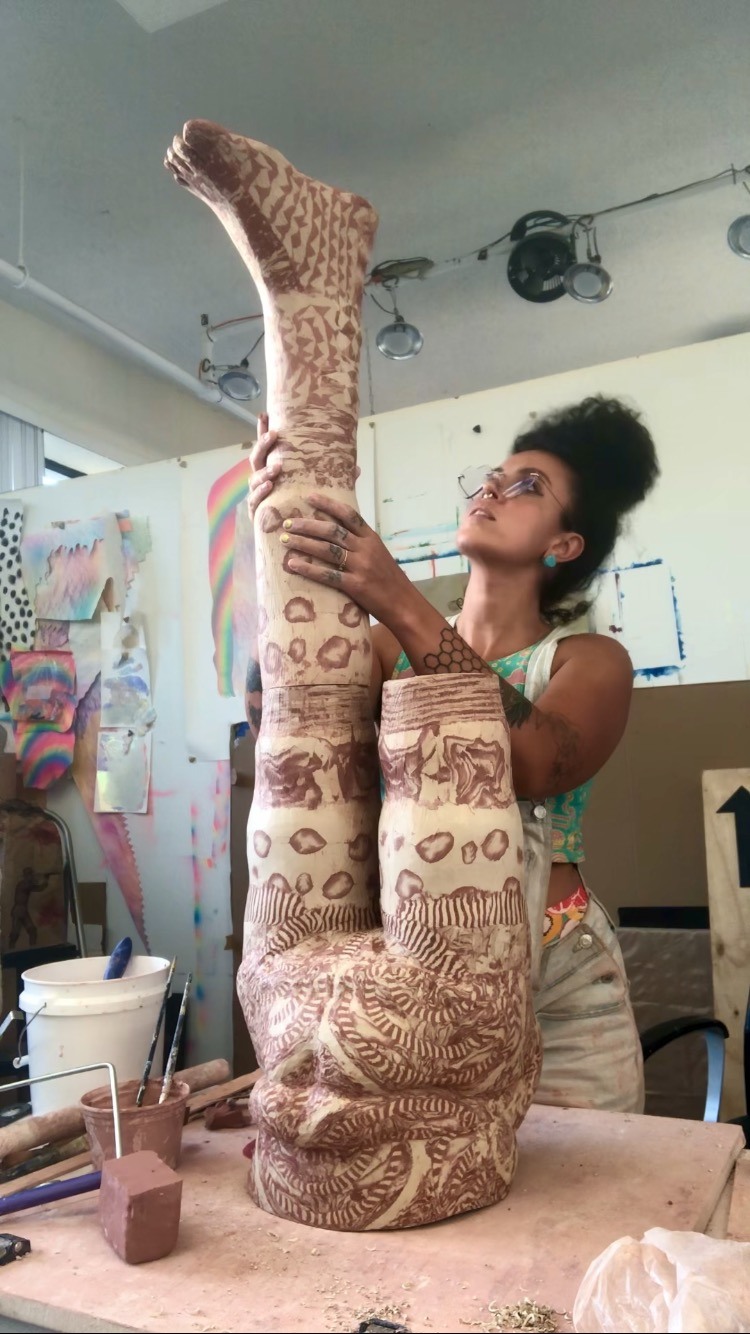
It’s really important to me that the pattern is structural, similar to the concepts around structural color versus pigmented color. They're within the piece itself. It's like a creation/destruction loop that kind of builds up and collapses and builds up and collapses. No matter how much I wash away or scrape away or carve out into the bodies, that pattern is always there. Even if you can't see anything on the surface, it's there.
I don't have strict ideas of how I'm supposed to be doing things in the studio. So much of it is a process of learning alongside the materials that I'm using and seeing what resonates and what doesn't. It’s a process of searching. For me, the same amount of effort and thought would go into sketching all that out in my nine by five journal as it takes to just do the thing. So I usually go right into it. I guess all making is like a constant creation/destruction loop. Intuition and the materials are what guide the process.
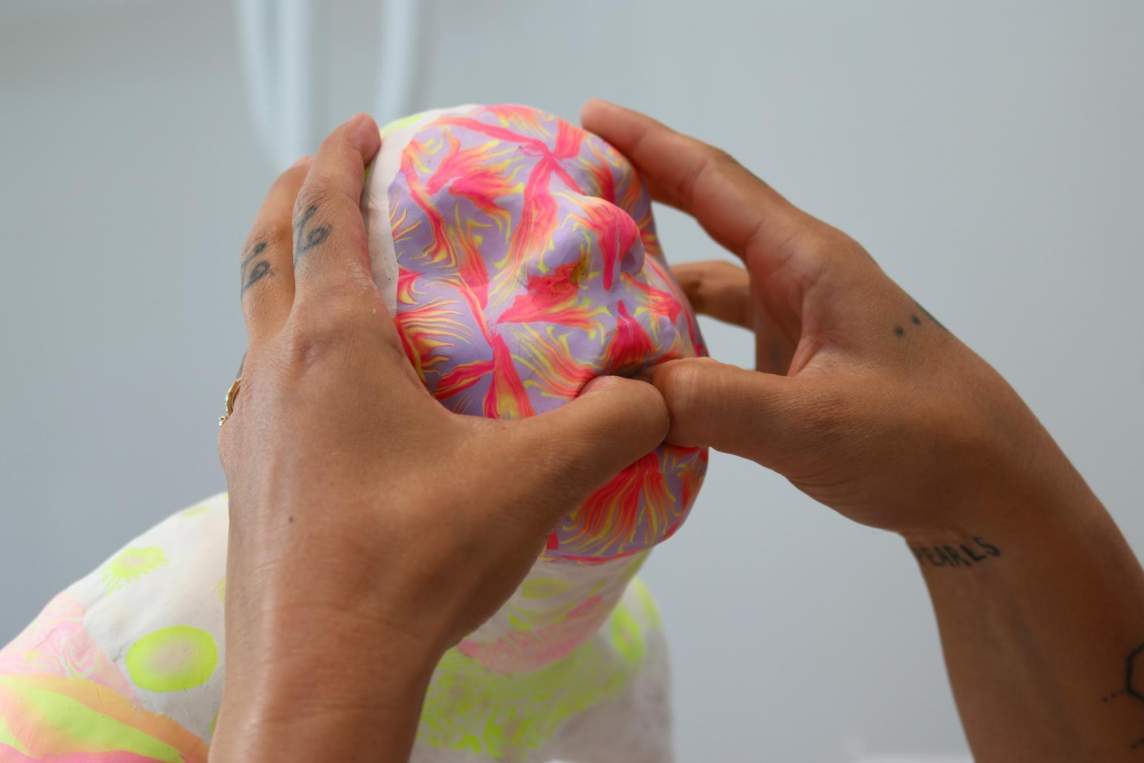
I’m transitioning into a new studio space at the moment. Last fall, my partner and I moved to the mountains in upstate NY. Receiving the Joan Mitchell Fellowship was a huge part of me being able to build a studio on our land, as was the Rockefeller Pocantico Prize, which came with a prize and a residency, which I’ve been doing for the past two months. I’m finishing this residency next week, and I’m going home to a new studio that is basically in our backyard.
During this residency, I’ve been making work that will go to the Union for Contemporary Art in Omaha, Nebraska, for a show that’s opening in September. I've been making this gigantic drawing that’s a splash page, essentially, of a hyper feminized post-apocalyptic Caribbean survival theme. It's very much in progress. There are three spaceships, and in this scene, there's a pink, sticky jelly glittering ocean full of bones. It’s a combination of drawing with watercolor and gouache, with collage. I brought a bunch of paper embossments that I had made at the Lower East Side Printshop residency with me here, and I’ve been painting them and using those as source material for the collage.
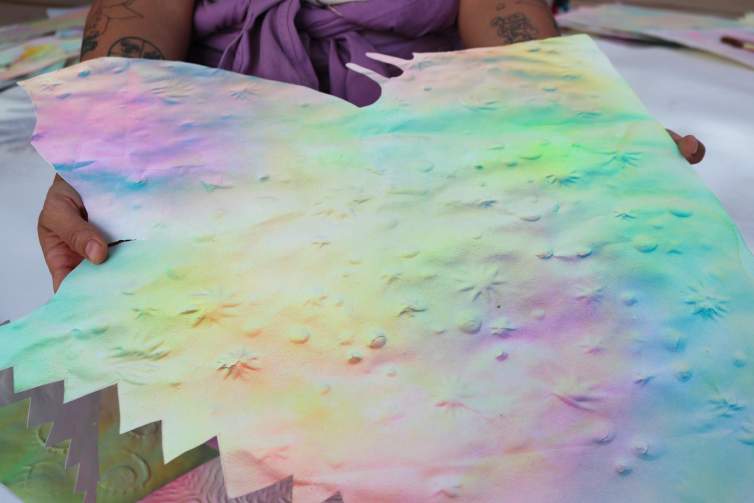
Alongside the nerikomi figures, I’ve been doing other clay works, where I’m translating my drawing language into clay surfaces through sgraffito—carving and scraping and drawing into layers of colored clay on different figures. For these drawings, I’m combining fantasy imagery, spiritual languages, and symbols from comics and stories and femme iconography to hopefully push the work to a place of being somewhat unacceptable in terms of value systems of taste and tastelessness.
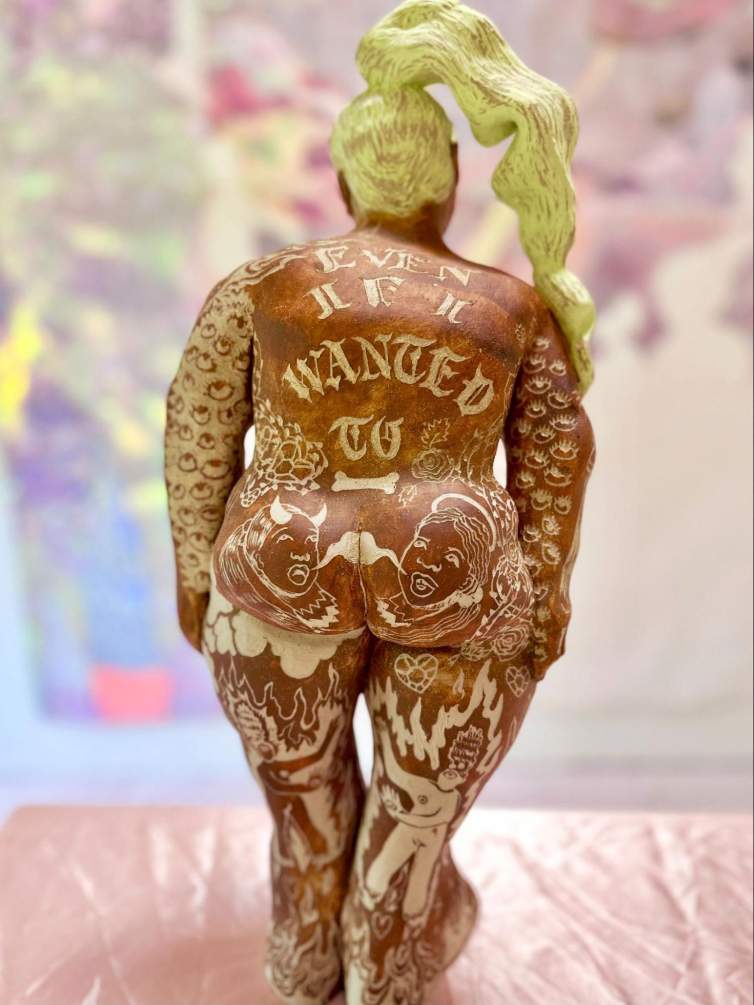
My partner and I were talking about how wild it is that clay, once it's fired, is a material that is so hard to destroy. Even when it's been shattered. Clay fragments are responsible for a lot of what we know in terms of ancient civilizations whose histories have been burned. The clay remnants are something that hasn't quite been destroyed, that gives evidence and can provide some sort of record or history for people whose histories and languages were systemically burned to the ground.
With this clay figure and the drawing I’m doing on it, I was thinking about the cultural pressure to “do big things” or the importance placed on monumental people, events, rituals, moments. You know, the things “worth” preserving. I’m carving drawings onto clay figures that might last… forever? And these drawings are about small everyday moments, mundane thoughts about needs and insecurities, conversations that come and go without being remembered even hours later. I imagine that a future society comes across the relics of our time now, with the idea that what might be most important is a collection of really insignificant, forgettable, quiet, hard and tender times.
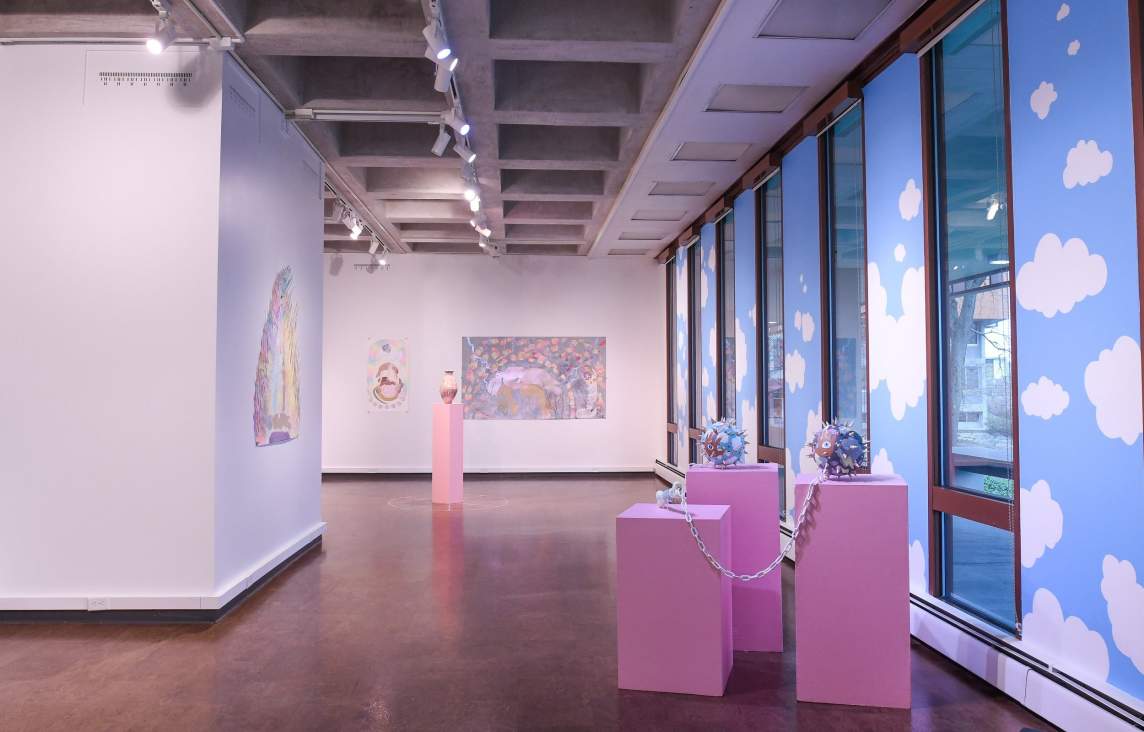
I guess my utopic vision of art is that it creates a place to be publicly curious—to not have it all figured out—together. To be in a space with strangers or people that you're not even necessarily interacting with, to just be curious and notice the impact that something has on you or the person next to you—without needing to immediately decide what you think about it. A place for opinions to change and shift within a really short amount of time, like, "What the fuck is this that I'm looking at? I am annoyed, I'm frustrated, I'm offended," or, "Wow, there's something here that gives me pause, gives me pleasure and I don’t know why, or there's something here that I want to touch. There's something here that moves or aggravates me in some way that I can't explain.”
And within that space, I want to make work that helps kids and people who feel monstrous or unknowable feel less alone. I grew up moving around my whole life, in a lot of rural areas and small towns where I felt completely isolated, and learned to be ashamed of my difference. And so, in my work, I'm thinking a lot about monster mythology and the autonomy of being a monster. A monster is simply a being who is unable to be anything but itself, and that self somehow threatens or breaks the rules of an imagined safety for any given society. Like, instead of running away and trying to prove all the ways that you're not a monster to just be like, "Okay, I'm a fucking monster." And maybe that just means having something that is so completely large and unknown within you that we don't yet have language for it. There's a power in that that completely scares the shit out of people. So for those people who struggle with feeling like they shouldn't be here, I just want to make work that helps them feel like they want to die less, or even just the willingness to be alive more. Like they have the right to exist and belong. I'm trying to figure out a better way to say that.
Interview and editing by Jenny Gill. Learn more about Amaryllis R. Flowers' work here.